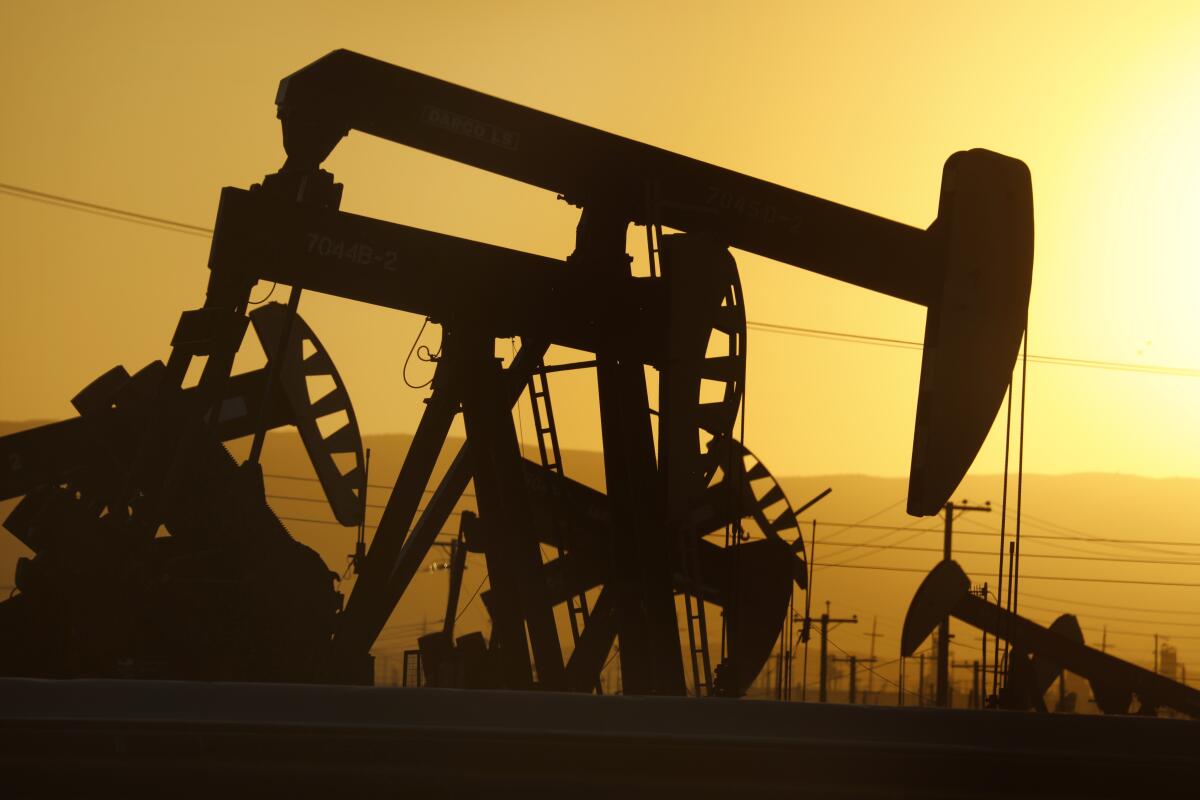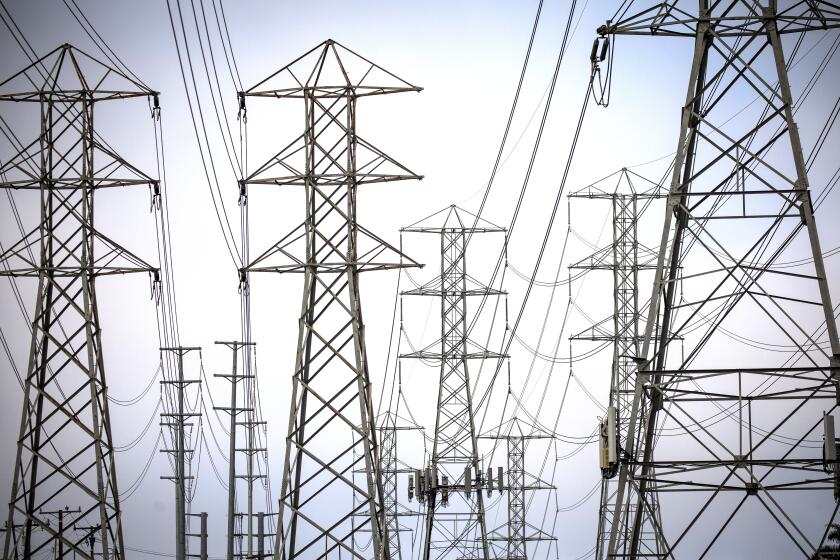Editorial: Cleaning up Californiaâs oilfields may cost $21.5 billion. Taxpayers shouldnât get the bill

Thereâs a huge problem looming as California moves beyond fossil fuels: How to get its declining oil industry to plug and remediate tens of thousands of oil and gas wells that already sit idle or wonât be producing for much longer.
And unfortunately, itâs looking like the companies responsible for the wells, tanks and pipelines wonât end up paying anything close to what it will take to clean up the mess they leave behind.
All told, it could cost as much as $21.5 billion to clean and decommission Californiaâs onshore oil and gas operations, according to a recent report commissioned by Carbon Tracker, a financial think tank that analyzes the effects of the energy transition. Thatâs so much money that even if in-state oil producers were forced to put all their future profits toward those cleanup obligations, they would still fall more than $15 billion short.
It would be pure fantasy to expect Californiaâs oil industry, whose in-state production peaked in the 1980s and has been declining for years, to voluntarily fulfill all of its cleanup obligations, because it wonât even make enough money to pay for it. Without swift and dramatic changes, much of the cleanup costs will fall to taxpayers. That would be a shameful abrogation of responsibility by an industry that has for more than a century profited mightily from extracting Californiaâs underground deposits while fueling the climate crisis, fouling the air and contaminating soil and water.
California is moving to an income-based formula for electric bills. Regulators should proceed cautiously and not give the utilities the high fees they want.
Thatâs why California regulators and lawmakers need to act quickly to reduce the burden to taxpayers and force the industry to fork over a lot more cleanup money, while itâs still in a financial position to do so.
While the oil industry and state regulators dispute some of the numbers in the Carbon Tracker report, its conclusions largely reinforce what has been clear for years: The oil and gas wells that fossil fuel companies are leaving unplugged and idle are a multibillion-dollar problem.
The report found that less than 1% of the amount needed to decommission Californiaâs oilfields has been set aside in bonds that can be used by regulators if companies go out of business or walk away. And as ProPublica reporter Mark Olalde wrote, âtime is running out to rectify the funding shortfall.â The report estimates that $3.65 billion â or 58% of the remaining proceeds from existing wells â will be generated during the next two years.
New York just became the first state to ban gas hookups from new buildings to fight climate change and air pollution. Whatâs preventing California from doing the same?
Californiaâs Department of Conservation Geologic Energy Management Division, or CalGEM, said that it shares the concerns raised in Carbon Trackerâs report, but that its data show more bond money has been set aside than stated in the report and that it has been making progress plugging idle wells using $100 million in new state funding.
âWe issue far more permits to plug and abandon wells than any other activity,â spokesperson Jacob Roper said, âwhich means existing oil companies are plugging more of their own wells than they are drilling.â
Roper said the department is âstill in the process of implementingâ a 2019 law that gave it broad authority to increase the amount of cleanup money oil producers must set aside, up to $30 million per operator.
Increasing those funds or imposing higher fees on the industry could reduce how much taxpayers will be on the hook for cleanup, said Dwayne Purvis, the Texas-based petroleum engineering consultant who wrote the report. âBut the fundamental situation is upside down. Thereâs just not enough blood in the turnip.â
Californiaâs commitment to spend $67 million to clean toxic Exide parkways is good. But the Newsom administration and Legislature need a cleanup done well.
That doesnât mean itâs futile. State regulators and lawmakers could be doing a lot more by adopting dramatically larger bond requirements, accelerated deadlines for plugging wells, and legislation to reduce incentives for operators to transfer wells to smaller companies that are more likely to bail on their cleanup obligations.
Policymakers should also be pursuing more sweeping measures, such as industrywide fees or other mechanisms that would hold more fossil fuel interests accountable, including past operators and major oil companies that may not own the wells but have been posting record profits and could easily afford to pay for the upstream effects of their products.
Addressing this problem should be an urgent environmental priority because oil and gas wells release methane, a potent greenhouse gas, and health-damaging air pollution that puts front-line communities, from Wilmington to Kern County, at increased risk of asthma, preterm births, reductions in lung function and other health problems.
Climate activists and politicians have likened the decision to letting arms dealers lead peace talks or putting a tobacco CEO in charge of health policy.
The California Independent Petroleum Assn., an industry trade group, criticized the Carbon Tracker report, saying it overestimated the costs by calculating what it would cost the state to plug wells, which is higher than what it costs the oil industry. But it provided no estimate of its own.
The group said that companies spent more than $400 million last year to plug and remediate 6,500 idle wells, that many operators have set aside additional funds for future remediation and that itâs best to leave it to individual companies to take care of their own liabilities.
But the group at the same time suggested tapping public funds, including more than $4 billion for plugging abandoned wells included in the bipartisan infrastructure law President Biden signed in 2021, as well as millions in additional state money available to regulators. The industry clearly wants to have it both ways.
We canât rely on wishful thinking or flimsy assurances from the petroleum industry that it can clean up this mess on its own, because the numbers show otherwise. Oil companies caused this problem, but itâs public officialsâ job to make sure they canât wash their hands of it and stick us with the bill.
More to Read
A cure for the common opinion
Get thought-provoking perspectives with our weekly newsletter.
You may occasionally receive promotional content from the Los Angeles Times.














